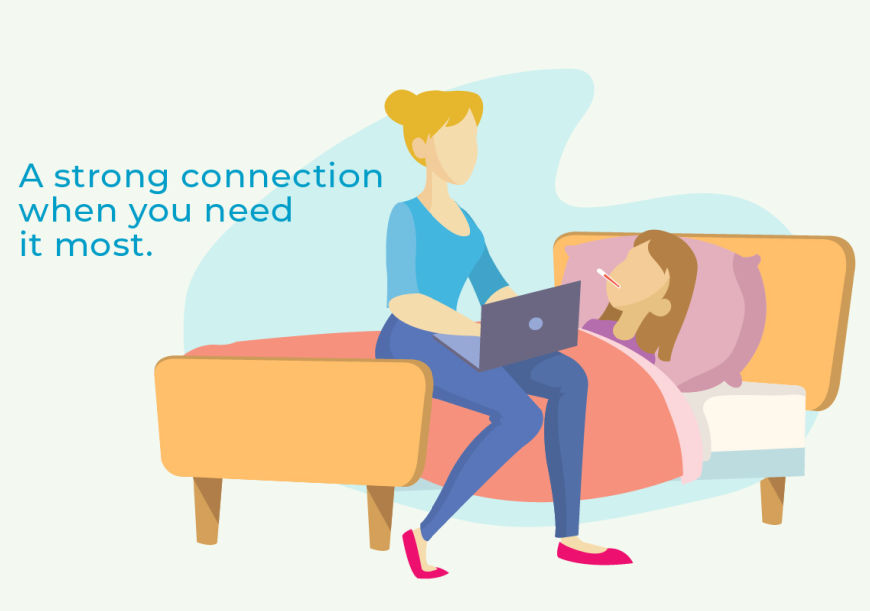Coronavirus is putting telemedicine in the spotlight as a safer, more efficient way to receive medical help.
It’s a welcome alternative to visiting a doctor’s office, now viewed as a hub of anxiety and potential illness. Additionally, many physicians’ offices don’t offer after-hours appointments or leave you twiddling your thumbs in crowded waiting rooms.
You don’t have to be tech-savvy to use telemedicine, either. It’s as simple as logging into your computer using your fast and reliable internet from Piedmont Rural Fiber, opening a video chat link provided by your healthcare provider and getting the medical advice and prescriptions you need from the comfort of your home.
Does Your Family Doctor Offer Telemedicine?
If you have a family doctor, check with their office first to see if they offer telemedicine. When possible, it’s a good idea to stick with a doctor who knows you, your medical history and has access to your files, charts and pharmacy information. This ensures that you are getting the best, most consistent care from a physician who is familiar with your health and with whom you feel comfortable.
Ask your primary care physician if their practice has an online patient portal. This system functions similarly to email but offers privacy and security necessary for relaying sensitive medical information and data.
Types of Telemedicine
Some patient portals allow you to video chat with a doctor or nurse from the comfort of your home. Other online portals allow for web-based consultation, which means you click through a questionnaire about your symptoms. This type of assessment is perfect for those with minor medical issues who don’t need an in-person visit.
If your primary care physician is part of an extensive medical network like a hospital, chances are they have a well-established, secure online system. In this case, your patient portal acts as a one-stop-shop for all your medical needs, allowing you to consult with specialists inside the existing framework.
But even if your primary care provider doesn’t have an integrated care system, they may still conduct appointments via video conferencing software like Zoom, Skype, or FaceTime. In fact, many medical offices use Zoom because it’s HIPAA-compliant! That means it protects all your sensitive medical data, helping you feel safe and secure.
What You Need to Access Telemedicine
Advances in technology have changed all our lives for the better. But to reap the benefits that telemedicine offers, you need to be able to access those services. With fast and reliable high-speed internet, you never have to worry about losing the connection to your health care provider, even in rural settings.
Now more than ever, it’s crucial to stay healthy and look after ourselves. And since you can get medical attention from the comfort of your own home, there’s no reason to avoid professional care and assessment. Better health is at your fingertips with telemedicine, and a good internet connection is the vehicle that gets you there.

